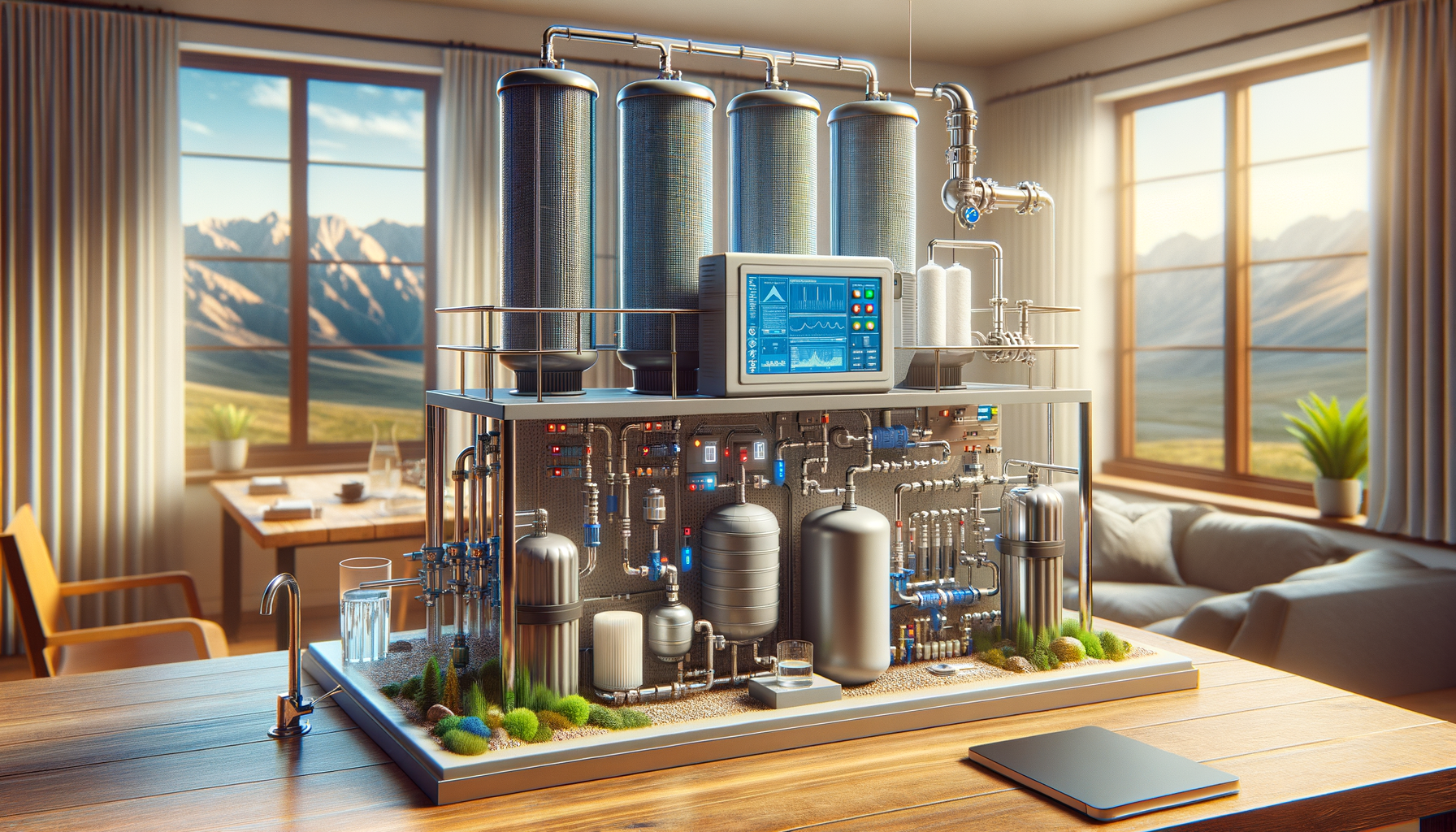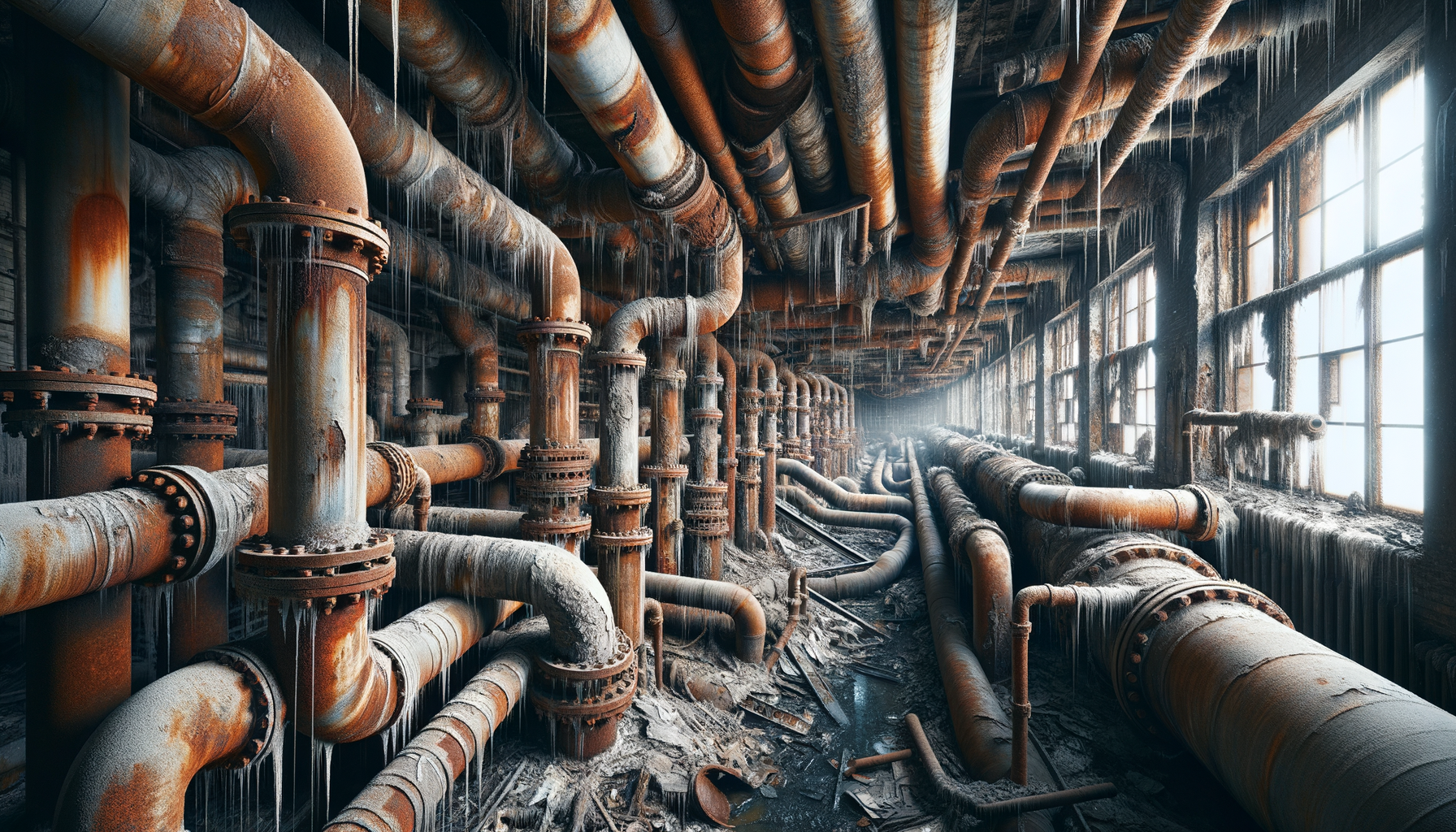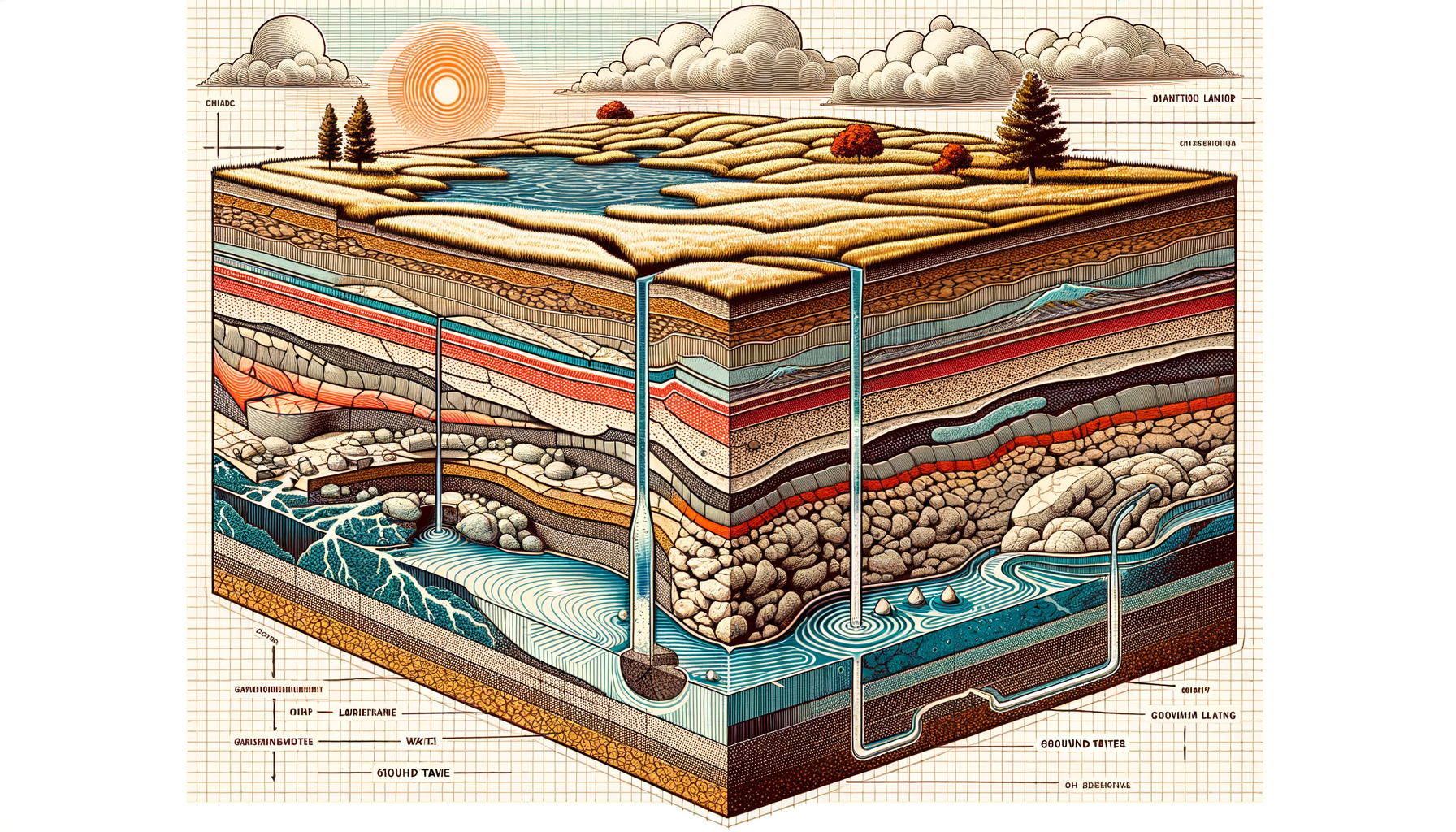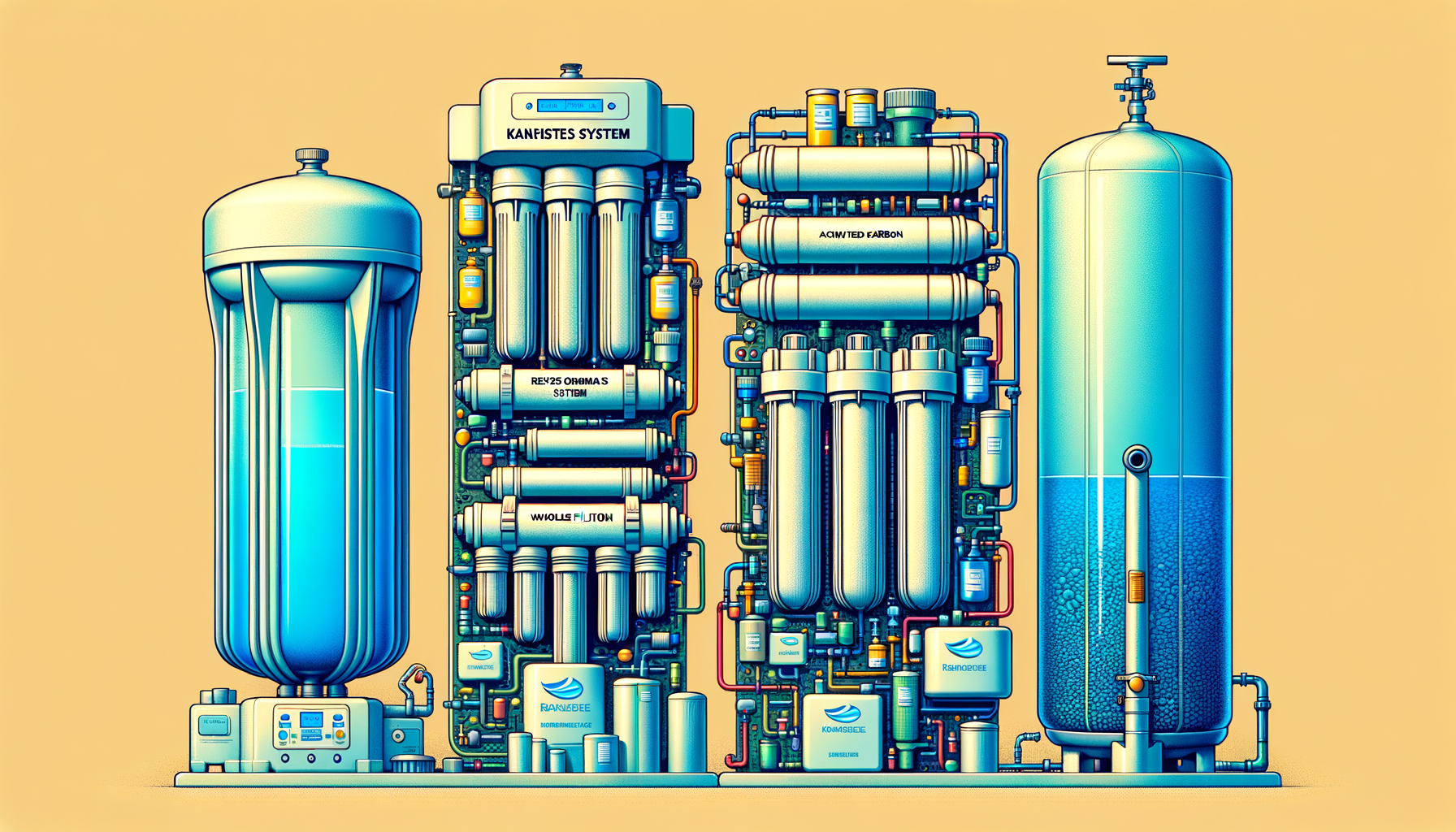Comprehensive Guide to Water Quality in Kansas State: Contaminants, Issues, and Water Filtration Solutions
by Ryan Moreau / updated February 22nd, 2025
Kansas, located in the heartland of America, is known for its vast plains, agricultural prowess, and rich water resources. The state’s water supply is a critical asset, supporting farming, industry, and the daily needs of its residents. Despite its abundance, Kansas faces significant water quality challenges due to agricultural runoff, natural mineral deposits, and aging infrastructure. In this comprehensive guide, we delve into the common contaminants in Kansas’s water, regional water quality challenges, and effective filtration solutions. Start by using our Water Quality Tool to get a customized analysis of your local water conditions.
Overview of Kansas’s Water Sources
Kansas’s water supply is as diverse as its landscapes, drawing from a mix of surface water and groundwater. Key sources include:
- Rivers: The Kansas River, Arkansas River, and Missouri River are vital for municipal water supplies, agriculture, and recreation.
- Reservoirs and Lakes: Man-made reservoirs like Milford Lake and Cheney Reservoir help manage water supply, flood control, and provide recreational opportunities.
- High Plains Aquifer: Also known as the Ogallala Aquifer, this extensive groundwater resource supports irrigation and drinking water needs, especially in western Kansas.
- Alluvial Aquifers: Found along river valleys, these aquifers provide water for both rural and urban communities.
Managing these water sources is crucial for sustaining Kansas’s economy and meeting the needs of its population. However, overuse and contamination pose significant challenges that require coordinated efforts to address.
Common Water Quality Contaminants in Kansas
Kansas’s water quality is influenced by its agricultural activities, industrial operations, and natural geology. To better understand what might affect your area, start with our Water Quality Tool and then review these common issues:
1. Nitrates
Agricultural runoff is a significant source of nitrate contamination in Kansas. Excessive use of fertilizers leads to nitrates leaching into groundwater and rivers. High nitrate levels are particularly dangerous for infants, causing methemoglobinemia or “blue baby syndrome.”
Water Filtration Options for Nitrates: Reverse Osmosis Water Filters
2. Pesticides and Herbicides
Herbicides like atrazine and pesticides used in farming can infiltrate water supplies through runoff. Atrazine is one of the most commonly detected contaminants in Kansas waterways and has been linked to hormonal disruptions in humans and wildlife.
Water Filtration Options for Pesticides and Herbicides: Activated Carbon Water Filters, Reverse Osmosis Water Filters
3. Arsenic
Natural deposits of arsenic in Kansas soils can leach into groundwater. Long-term exposure to arsenic is associated with various health problems, including skin disorders, cardiovascular diseases, and increased cancer risk.
Water Filtration Options for Arsenic: Reverse Osmosis Water Filters, Activated Alumina Water Filters
4. Radon and Uranium
Certain areas in Kansas have elevated levels of radon gas and uranium in groundwater due to geological formations. These radioactive elements can pose serious health risks, including lung cancer and kidney damage.
Water Filtration Options for Radon and Uranium: Reverse Osmosis Water Filters, aeration systems for radon removal
5. Fluoride
While fluoride is beneficial for dental health in small amounts, naturally high levels in some Kansas water sources can lead to fluorosis, affecting teeth and bone health.
Water Filtration Options for Fluoride: Reverse Osmosis Water Filters
6. Selenium
Selenium is another naturally occurring element in Kansas that can contaminate water supplies. Elevated selenium levels can cause hair loss, nail brittleness, and neurological issues over time.
Water Filtration Options for Selenium: Reverse Osmosis Water Filters
7. Bacteria and Microbial Contaminants
Private wells, especially in rural areas, may be susceptible to bacterial contamination from livestock operations or septic system failures. This can lead to gastrointestinal illnesses and infections.
Water Filtration Options for Bacteria and Microbial Contaminants: UV Water Purifiers, Reverse Osmosis Water Filters with microbial filters
8. Lead and Copper
Aging infrastructure in older Kansas cities can lead to lead and copper leaching into drinking water. Corrosion of pipes is a primary culprit, posing significant health risks, particularly for children.
Water Filtration Options for Lead and Copper: Activated Carbon Water Filters, Reverse Osmosis Water Filters
9. Total Dissolved Solids (TDS)
High levels of minerals, including calcium, magnesium, and sodium, contribute to elevated TDS in Kansas water sources. While not necessarily harmful, high TDS can affect water taste and cause scaling in appliances.
Water Filtration Options for TDS: Reverse Osmosis Water Filters
Regional Water Quality Challenges in Kansas
Kansas’s diverse geography and land use patterns contribute to various regional water quality issues. Key challenges include:
1. Western Kansas: Aquifer Depletion and Contamination
The High Plains Aquifer is being depleted faster than it can recharge due to extensive irrigation. This not only threatens water availability but also leads to higher concentrations of contaminants like nitrates and arsenic in the remaining groundwater.
2. Central Kansas: Natural Mineral Contaminants
Central Kansas faces challenges with naturally occurring fluoride, selenium, and radium in groundwater. These contaminants necessitate specialized treatment methods to ensure water safety.
3. Eastern Kansas: Industrial and Agricultural Runoff
Eastern Kansas, with its larger urban centers and agricultural lands, contends with runoff containing pesticides, herbicides, and industrial pollutants that affect both surface and groundwater quality.
For more information on these challenges, refer to the Kansas Department of Health and Environment (KDHE Water Information).
General Water Characteristics in Kansas
Understanding the inherent qualities of Kansas’s water is essential for selecting appropriate treatment solutions:
1. Hard Water
Hard water is prevalent throughout Kansas due to high levels of calcium and magnesium from limestone aquifers. This can lead to scale buildup in pipes and reduce the efficiency of soaps and detergents.
To address hard water issues, installing a water softener is recommended. If you’re unsure which system suits your household, try our Water Softener Calculator for personalized guidance.
2. Alkalinity and pH Levels
The water in Kansas often has high alkalinity and varying pH levels, influenced by local geology. While generally safe, high alkalinity can affect water taste and interact with other water treatment processes.
- Taste and Aesthetics: Elevated alkalinity can give water a flat, unpleasant taste.
- Treatment Considerations: Adjustments may be needed in water treatment to account for high alkalinity.
3. Salinity
In some regions, especially where irrigation is heavy, salinity levels in groundwater can increase. High salinity affects not only water taste but also soil quality when used for irrigation.
Filtration Options for Salinity: Reverse Osmosis Systems effectively reduce salinity in water.
Utilizing the Water Quality Tool for Kansas Residents
Understanding your local water quality is essential for ensuring safe drinking water. Our Water Quality Tool enables Kansas residents to:
- Enter their zip code for a detailed analysis of local water sources
- Access data on common contaminants in public and private water supplies
- Receive personalized recommendations for filtration systems based on your water quality challenges
Recommended Filtration Solutions for Common Kansas Contaminants
Based on the prevalent contaminants identified in Kansas’s water sources, the following filtration systems are highly recommended:
1. Reverse Osmosis Systems
Reverse Osmosis Systems are effective against a wide range of contaminants, including nitrates, arsenic, fluoride, selenium, and radium. They are suitable for both under-sink and whole-house applications.
2. Activated Carbon Filters
Activated Carbon Filters remove organic chemicals like pesticides and herbicides, as well as improve taste and odor by reducing chlorine and other chemicals.
3. Water Softeners
Water Softeners address hard water issues by exchanging calcium and magnesium ions with sodium or potassium, preventing scale buildup and extending the life of plumbing and appliances.
Local Water Testing Services in Kansas
Accurate water testing is crucial for identifying specific contaminants in your water supply. We recommend using SimpleLab for comprehensive water quality analysis. Their testing kits are easy to use, and the detailed lab reports help you make informed decisions about water treatment.
Case Studies: Addressing Water Quality Issues in Kansas
Real-world examples provide valuable insights into how water quality challenges are being addressed across Kansas:
1. Hays: Combating Water Scarcity and Quality
The city of Hays faced dwindling water supplies from the Smoky Hill River and declining groundwater levels. They implemented aggressive water conservation measures and invested in water reuse and advanced treatment technologies to secure a sustainable water future.
2. Wichita: Enhanced Treatment for River Water
Wichita relies on the Equus Beds Aquifer and surface water from the Little Arkansas River. Faced with contamination from agricultural runoff, the city upgraded its treatment facilities with ozone and biological filtration to improve water quality.
3. Rural Wells: Addressing Private Well Contamination
In rural Kansas, private wells are common and often unregulated. Initiatives have been launched to educate homeowners about testing and treating their well water, leading to the installation of filtration systems like UV purifiers and reverse osmosis units.
Call to Action
Kansas’s diverse water sources and agricultural landscape present unique water quality challenges. Ensuring safe and clean water for your household requires proactive measures and informed decisions.
Start by entering your zip code into our Water Quality Tool for a detailed analysis of your water supply. Then, explore our filter review articles to find the most effective system for your needs. Finally, confirm your water’s safety with comprehensive water testing services to ensure you have the clean, safe water your home deserves.






